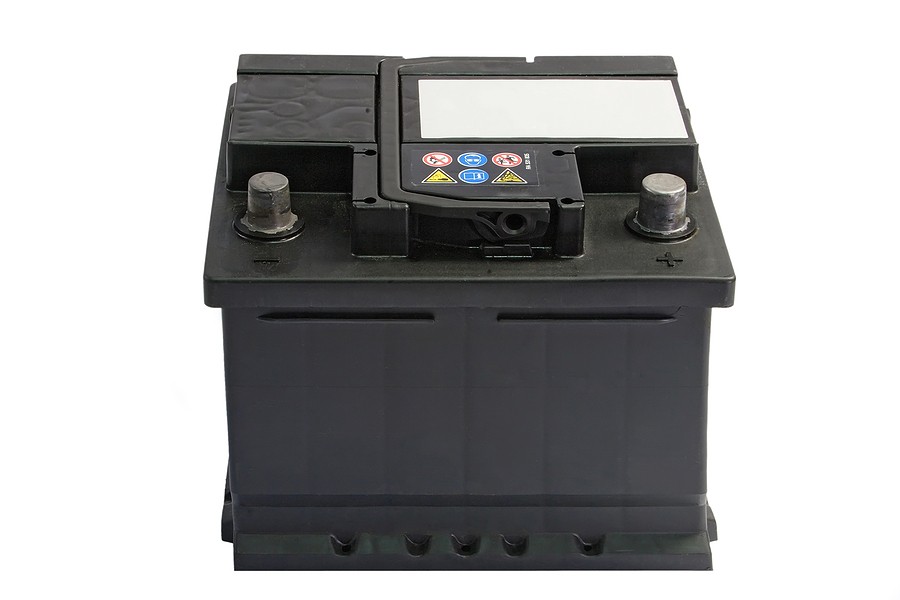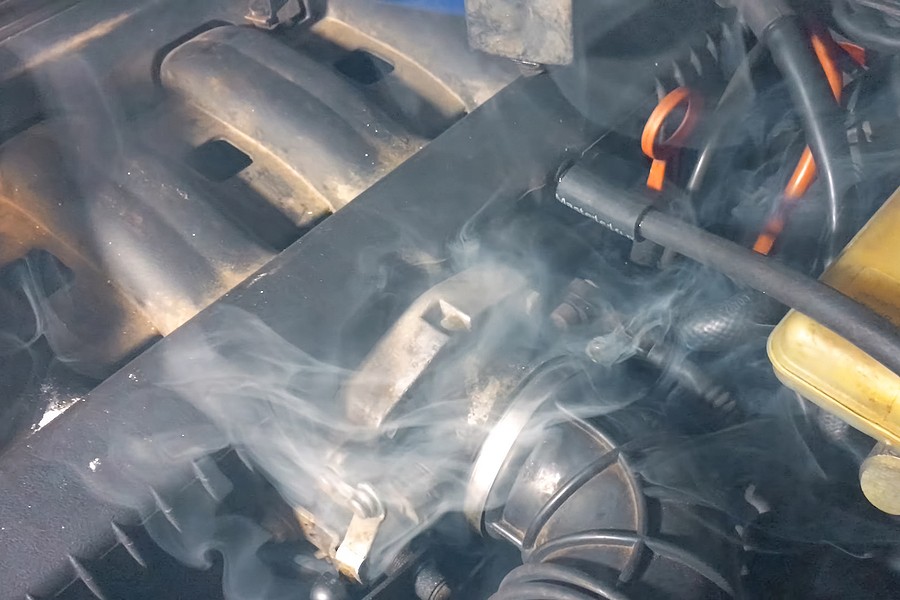The coil pack is a popular component of the vehicle and is used for spark-ignition in petrol (gasoline) and diesel engines. It channels high voltage from the vehicle's battery to each cylinder which in turn fires a spark plug – thus igniting the air/fuel mixture. As such, it is not surprising that symptoms associated with coil pack failure vary widely between vehicles and engine types.
A bad coil pack can be an expensive and time-consuming issue to deal with, especially if it's the car's only problem. Therefore, it is important for every driver to immediately resolve the bad coil pack issue to prevent dealing with more complications that could cost thousands of dollars on repair.
In this article, we shall look at some of the most common 10 bad coil pack symptoms and how best to test for them. Whenever you notice any of these symptoms, you must replace the coil packs immediately.

What is a coil pack and what does it do in a car engine?
A coil pack is a Transformer with multiple secondary windings. On the back of the Coil pack are spark plugs wires leading to each cylinder on your engine.
It acts as an ignition switch relaying high voltage from the vehicle's battery to each plug wire on time, every time.
When one of these components goes bad it can cause problems in the engine performance and also affect fuel economy.
Most of the time coil packs are mounted on top of the spark plugs, but there are some engines that have multiple coil packs all wired up to one plug, which makes for a less complicated harness design.
These components get extremely hot while working under pressure so it is not uncommon to see one coil pack fail before the other.
10 Bad coil pack symptoms
To prevent dealing with significant complications, it's critical for every driver to keep an eye on the coil pack and fix it whenever needed. The good news is that your vehicle will show clear symptoms indicating it's time to replace the coil pack.
Let's take a closer look at some of these symptoms:
1. Engine misfire
A misfiring engine is one of the most common problems associated with a bad coil pack. The vehicle may also shudder or vibrate when accelerating, especially at lower speeds.
2. Poor Fuel Economy
If your car's fuel economy isn't what it used to be, there are high chances that you have a faulty coil pack. The engine will still use fuel, however, it won't perform at its full potential.
3. Rough idle
A car that is idling rough for no reason may have a bad coil pack. Most of the modern vehicles have a separate ECU used to control idle speed and some other functions so an unusual idle problem could point to a bad coil, but it usually happens with older cars where there is no such control system in place.
4. Check Engine Light (MIL) illuminated
The most obvious symptom of a misfiring engine is also one of the easiest to notice – the check engine light (MIL – malfunction indicator lamp). If your car's MIL lights up with no apparent cause, you need to have the coil pack checked.
5. Poor battery life
If your car's battery is dead even after a full charge, it may be due to bad spark plugs or bad coil packs. The vehicle draws high amps while running and this drains the battery with time if the engine isn't sparking properly.

6. Loud backfiring
A loud backfiring noise coming from under the hood during acceleration may indicate problems with ignition timing – which means there's something wrong with either your spark plugs or your coil pack, or both. If you hear loud pops during engine shut-off, chances are that it's simply your coils dying and not giving proper fire anymore. It is also possible that one of these components is dead, but that's less likely.
7. Hard starting or not starting at all
The most common causes of hard engine start are faulty spark plugs, clogged fuel injectors, bad fuel pump, or bad ECU. If your car starts with a jump-start cable but doesn't fire up on its own after being shut off for more than 15 minutes, the coil pack may have gone bad. Even if there are no symptoms to look out for, you should always check the coils yourself before spending money on any other components in the ignition system – just to be sure they are working properly.
8. Engine misfires only under load
If your vehicle experiences misfires only when running under heavy load (i.e. when under a heavy load or accelerating, but not during idle), it may be due to a faulty coil. If you have multiple coils failing at the same time, however, this usually indicates problems with the ECU itself – so don't rule that out as well.
9. Poor engine performance
None of the above symptoms guarantees that your coil packs are bad, so if you notice poor engine performance without any noticeable misfires or backfiring then the problem is probably elsewhere in the ignition system (spark plugs or cabling).
10. Engine overheating
Lastly, an overheated engine may indicate faulty coils and/or fuel injectors that don't send enough gas towards the engine (due to clogging) or fail to cool the engine down properly.

How to test a coil pack?
Testing the coil pack is not a complicated job and doesn't require advanced mechanical skills. To make sure you know exactly what's wrong, follow these steps when testing the coil pack:
1. Turn off your vehicle, pull out the ignition key and open the hood.
2. Locate the coil packs – they are located directly on top of each spark plug (they may be covered with a plastic cover). On some models, the coil packs are located on the engine block.
3. Remove the spark plug wires from their holders by gently sliding them upwards (away from the spark plugs).
4. Check whether the ignition coils move freely by giving them a push with your finger – they should snap back into place easily and not be loose or show any signs of damage or cracks.
5. Turn on your car and let it idle while you check the coils visually for any signs of damage, liquid leaks, or melting. The outside of a faulty coil pack may feel warm to touch, but if there is liquid leaking out you will be able to see it clearly – either steam or oil droplets are indicators of coil failure. If you notice any liquid, turn off your engine immediately and let it cool down before checking the coils again.
6. Now start your car up again and check whether all six ignition coil packs are sparking equally by removing the spark plug wires one by one (hold them firmly but don't pull too hard or use pliers) and viewing the sparks through the engine bay. If anyone or more of your coils are sparking poorly, you'll have to replace them. The best way to check whether a coil is working properly is still by performing a visual inspection with the spark plug wire removed – just be sure that it's not touching anything conductive before you take it out of the plug.
7. If all six coils are sparking fine, connect the spark plug wires back to their holders and tighten them gently with your hands. Start your car up again and let it idle for a few minutes while you check for any new misfires – if everything is fine, take it out for a short drive and listen carefully for any new odd noises coming from the engine.
8. If you notice new misfires, repeat steps 1 to 7 for each of the six coils individually – if any of them fails to produce a good spark after replacing it with a new one, you'll have to get your car checked at an auto repair shop immediately.
9. If all of your ignition coils are working fine, the problem is likely elsewhere in the ignition system – if you still think it's your coil packs, however, even after testing them properly, I recommend replacing all 6 of them at once to save money.
10. If you're still having trouble with your car misfiring, you'll need to consult your mechanic for more detailed guidance.
How much does it cost to replace the coil pack?
The replacement of a coil pack costs between $70 and $250, depending on the car model and location. This means that it's by far one of the cheapest engine problems you can run into – don't automatically assume that your spark plug wires (which cost around $40) are to blame if your car starts misfiring – in most cases, it's much cheaper than that.

How to install a new coil pack?
Here is all that you need to install a new coil pack:
1. Remove the air intake hose from the throttle body, then disconnect the battery
2. Loosen all six spark plug wires and remove them from their holders by pulling them away from the spark plugs gently (hold a rag in your other hand to catch any oil that may drip out).
3. Unbolt each coil pack using a ratchet and socket, then remove them from the engine block.
4. Bolt in the new coils, connect the spark plug wires to their corresponding holders and tighten gently with your hands or a wrench (don't tighten too much).
5. Reconnect your battery if you disconnected it earlier, turn on your car and check for misfires.
6. If everything is okay, take your car for a short drive to check whether the misfires are still present or not. If they are still there, you'll need to see your mechanic to try to solve the problem.
7. Place each spark plug wire (holding it at its base) back into its holder and tighten gently with your hands.
8. Reconnect the air intake hose if you disconnected it earlier, then turn your ignition on for a minute (without starting your car).
9. Turn off your engine and check whether all spark plug wires are tight enough – if not, tighten them again with your hands or a wrench gently until they're secure.
10. Start your car up and check whether the misfires are still there or not – if they are, try checking for any new symptoms by driving your car around the block to see if the problem is still present.
Bad Coil Pack Symptoms FAQs
This section covers the most frequently asked questions about the bad coil pack symptoms.
How do you check a coil pack to see if it's good?
The easiest way to do this is by using a spark tester, which you can buy at most auto parts stores. The whole test takes about 5 minutes – disconnect the coil pack from its power source, ground one wire at a time on some metal surface and see if sparks are being sent out of each plug. If they aren't then there's something wrong with the coil pack itself.
Does replacing a coil pack require special tools?
If you want to do it yourself, no special tools are required – all you need is a wrench and 5 minutes of your time. If you wish to have it done professionally by an automotive tech, they will most likely use a specialized coil-pack socket and ratchet or a wrench.
How do you test a coil pack with a screwdriver?
This does work, but you have to be very careful. Make sure the engine is off and cooled down, disconnect all of the coil pack's wires from their power source and then connect them one by one between a screwdriver blade and ground (metal surface). If sparks fly out of the plug then it's working properly, if not – it's probably faulty.
How do you test a coil pack with a multimeter?
Testing the coil packs with a multimeter is even easier – all you need to do is check if there's continuity between the plug and the metal casing of the coil. If there isn't, then it's faulty.
What would cause a coil pack to go bad?
A faulty coil pack can be caused by a number of things – environmental factors, heat, engine oil seeping through the spark plug holes and onto the coils themselves, moisture accumulating on the plugs, a faulty ECU, or other problems in your ignition system.

How long will a new coil last before going bad again?
The longevity of a new coil pack depends on the quality of the product, but most manufacturers tend to advertise its lifetime as somewhere around 30-60 thousand miles.
How much does a new coil cost?
The price of a replacement coil varies depending on the brand and model, but you can expect to pay anywhere from 30 USD to more than 100 USD for one.
How many volts should be at the coil?
This depends on the model of your car, but the average voltage at the coil should be somewhere around 14.7 or slightly higher than that.
What is the firing order on a coil pack?
The voltage required to be at the coil depends entirely on your engine – check your owner's manual to see what the manufacturer recommends. As for the firing order, it will depend on where you live (some countries run their engines counter-clockwise while others clockwise), which part of the
How long do ignition coils last?
The average lifetime of a coil pack ranges from 20-60 thousand miles, depending on how much you use your car and what quality of the product is. If it becomes too worn out, you might need to replace or rebuild it (if needed).
Conclusion
If you're experiencing any of the bad coil pack symptoms we've outlined in this article, it's important to take action as soon as possible. Not only can a faulty coil pack cause your car not to start, but it can also lead to further damage in other parts of your ignition system.
Fortunately, testing for a bad coil pack is easy and can be done with most common tools – all you need is a spark tester or multimeter.
If you do find that your coil pack needs to be replaced, the process is relatively simple and can be done by most people without special tools. We hope this article has been helpful – please feel free to reach out if you have any questions!



